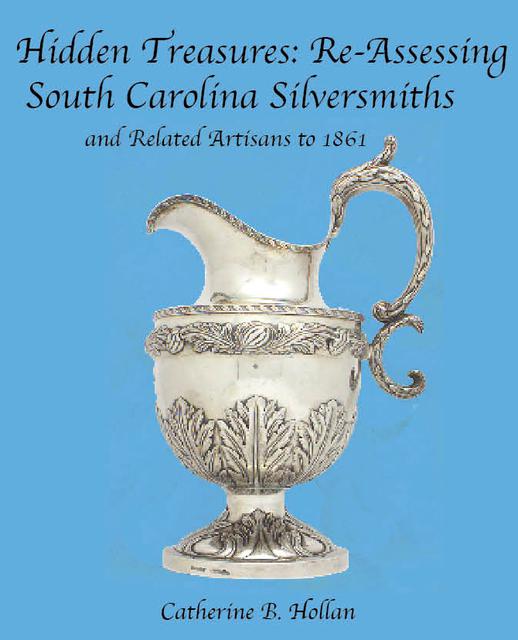 | ||||||
- Lives, Marks, and Silver Objects
- Contexts and Comparisons
- Connections among Artisans
- Re-attributions and Identifications
Family records have established kinship, partnerships, arrivals, and removals. These clarified John and W.H. Ewan as father and son, Daniel and Thomas You as brothers, Lathrop & Wadsworth as two Connecticut young men embarking on a first business venture in Georgetown.
National and international comparisons provide context, for example:
--the rarity of American-made bottle labels
--novelty of the wine trolley in 1800
--curious animated clocks by Lockwood
--uses of an all silver cup and saucer
--enslaved silversmiths in 18th and 19th century America
--engraved state currency
--silver horse racing trophies
--scholastic, horticultural, agricultural, and military medals.
Some silver has been known but mislabeled in museum and private holdings for sixty and eighty years. The odd J.&P. Mood teapot with extended lower reservoir is now identified as a rare silver veilleuse. The worn gold Columbian coin countermarked by William Gowdey is identified with its context of plugging low-weight coins for use in commerce before the U.S. Mint was established.
The dust jacket shows a water pitcher made about 1810 by Longley & Dodge of Charleston, privately owned, on long-term loan to The Charleston Museum.
This updated, enlarged study of Burton's 1942 and Ripley's 1991 classic
South Carolina Silversmiths
brings new research to the subject.
Hidden Treasures: Re-Assessing
South Carolina Silversmiths
and Related Artisans to 1861
by Catherine B. Hollan
- 8.75 by 11.25 inches
- hardbound
- just under 1,000 pages
Related Exhibition
"Hidden Treasures, Re-Assessing South Carolina Silver"
at The Charleston Museum
360 Meeting Street, Charleston, SC
January-March 2022.
Related articles in Silver Magazine:
- "Re-Visiting Jamaican Silver Marks" Sep/Oct 2025--Ewan's leopard and lion marks mis-interpreted as Jamaican c1800
- "A SC Silver Exhibition" Sep/Oct 2025-- John LeHeup Collection at Anderson Museum
- "Veal & Wood and George Sharp Jr" July/Aug 2024--not SC but GA
- "The Charleston Silversmith as Gold Coin Regulator" May/June 2022--Wm. Gowdey in 1785
- "When is a Charleston Silver Kettle a Veilleusse?" Nov/Dec 2021--J&P Mood teapot on stand
- "Campbell & Yongue: the Montgomery [AL] vs Columbia [SC] Controversy" May/June 2021--reassigned to Alabama
